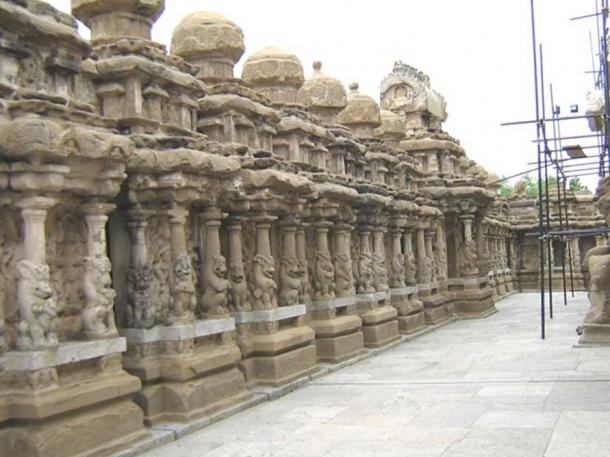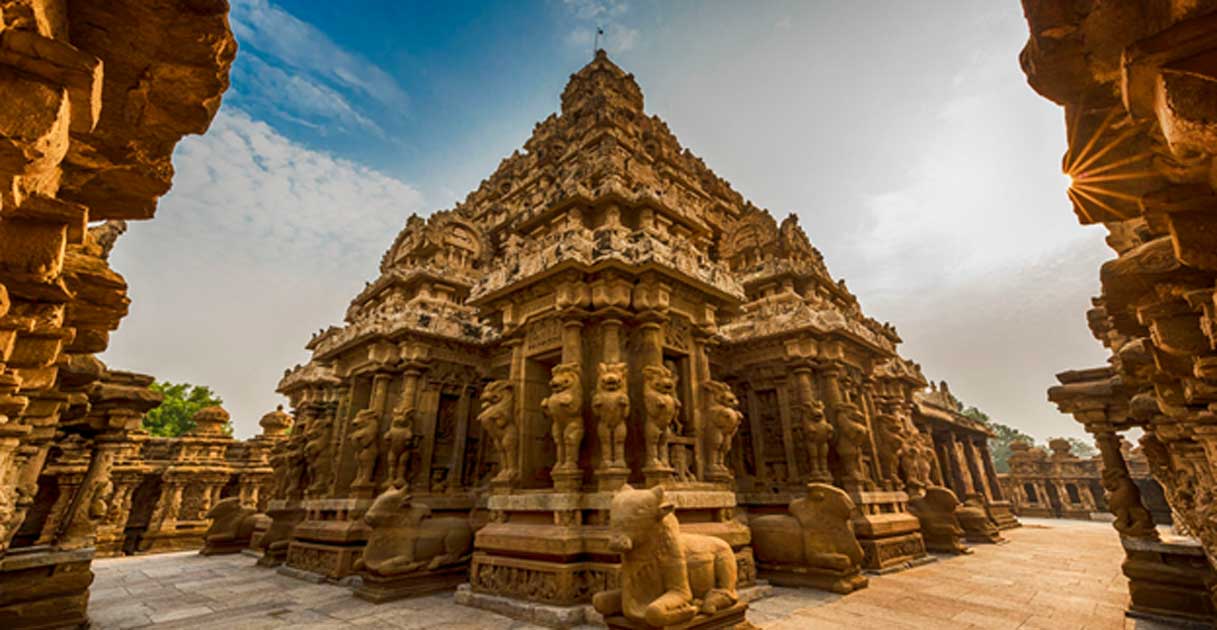Countless Devotees Are Drawn to It, What Makes the Kanchi Kailasanathar Temple So Special?
Kanchi Kailasanathar Temple is a beautiful Hindu temple located in Kanchipuram (known also as Kanchi), a city in the southern Indian state of Tamil Nadu. This magnificent temple is claimed to be the oldest structure in the city, its date of construction being given as between the 7th and 8th centuries AD. Kanchi Kailasanathar Temple was built in the Dravidian architectural style, and is dedicated to Lord Shiva, who is worshipped here in the form of Kailasanathar, which means ‘Lord of the Cosmic Mountain’. Apart from being a place of worship, the elaborate decoration makes Kanchi Kailasanathar Temple one of the city’s top tourist attractions.
Constructing the Kanchi Kailasanathar Temple in a Sacred City
Kanchipuram is considered to be one of the seven sacred cities of Hinduism, and was chosen by the Pallava Dynasty, when it was founded during the 3rd century AD, to be its capital. Although the Pallavas ruled Kanchipuram from the 3rd century AD until the end of the 9th century AD (with a period when the city was occupied by the Chalukyas), it has been claimed that the earliest surviving structure from this period is the Kanchi Kailasanathar Temple.
- The Extensive and Sometimes Mythical History of the Chola Empire
- Important 800-Year-Old Jain Inscription Uncovered in India

The full view of the Kailasanathar temple complex. (CC BY-SA 3.0)
The foundation of Kanchi Kailasanathar Temple has been attributed to Narasimhavarman II, known also as Rajasimha Pallaveswaram, a ruler of the Pallava Dynasty. This monarch is recorded to have reigned during the first half of the 8th century AD, though construction of the temple is traditionally taken to have begun in 685 AD. Kanchi Kailasanathar Temple was completed in 705 AD, and its construction at this time was apparently overseen by one of the king’s sons, Mahendravarman.
Kanchi Kailasanathar Temple was built using sandstone, and is an example of the Dravidian architectural style. The use of stone for the construction of the temple departs from the tradition of earlier temples, which had been either built of wood or hewn into rock faces in caves or on large boulders. Additionally, Kanchi Kailasanathar Temple has a foundation of granite, which is able to support the weight of the massive structure.
Notable Elements of the Kanchi Kailasanathar Temple
The various elements of the Kanchi Kailasanathar Temple include a sanctum sanctorum (‘holy of holies’ or ‘main shrine’), a mandapa (‘main hall’), a compound wall, and a gopura (the monumental pyramidal tower over the entrance gate leading to the temple). The main shrine is noted for its 16 sided Shivalingam made of black granite. This shrine is enclosed by a compound wall with niches, into which 58 small shrines were carved. These shrines depict Shiva and Parvati in various dance forms.

View inside Kanchi Kailasanathar Temple. (CC BY-SA 3.0)
Yali sculptures are another interesting feature of the Kanchi Kailasanathar Temple. These are mythological beasts that resemble lions. In the Kanchi Kailasanathar Temple, these creatures are portrayed standing on their hind legs, and may be found on the pillars of the mandapa.

Typical design of pillar at the Kanchi Kailasanathar Temple with multi-directional mythical lions. (CC BY 2.0)
Local tradition states that the temple was used as a sanctuary by the kings of the dynasty during times of war. Therefore, a secret tunnel that served as an escape route was also built in the temple.
Worshipping Deities at the Kanchi Kailasanathar Temple
Although the Kanchi Kailasanathar Temple is dedicated to Lord Shiva, other Hindu deities are also depicted on the walls of the temple. On the outer walls of the temple, for example, images of divine figures include those of Brahma, Nandi, and Durga. As for the inner walls, images of Vishnu’s avatars, Skanda, and Ravana can be found.
- The Ancient Indian City of Mandu: A Fort and Pleasure Palace
- The Sree Padmanabhaswamy Temple: Secret Cellars Create the Richest Hindu Temple in India

Inner court or the circumambulatory passage with 58 sub shrines. Kailasanathar Temple. (Public Domain)
The most popular festival celebrated in Kanchi Kailasanathar Temple is the Maha Shivratri, which is held annually on the 13th night / 14th day of the Magha month of the Hindu calendar (around February / March). As it is considered extremely auspicious to visit this temple during this celebration, thousands of devotees go to the temple on that day. Other major festivals celebrated at the Kanchi Kailasanathar Temple on a yearly basis include Ram Navami, Ganesh Chaturthi, and Diwali.
Top image: Kailasanathar Temple, Kanchipuram. Source: (CC BY-NC-ND 2.0)
By Wu Mingren
References
Nandni, 2013. The Kailasanathar Temple in Tamil Nadu. [Online]
Available at: http://www.mapsofindia.com/my-india/travel/kailasanathar-temple-in-tamil-nadu
Pan India Internet Private Limited, 2017. Kailasanathar Temple. [Online]
Available at: http://www.kancheepuramonline.in/city-guide/kailasanathar-temple
TeluguOne.com, 2017. Lord Shiva As The Kailasanathar In Kanchipuram !. [Online]
Available at: http://www.teluguone.com/devotional/content/siva-temples-of-kanchipuram-65-34031.html
TemplePurohit, 2017. Kanchi Kailasanathar Temple. [Online]
Available at: https://www.templepurohit.com/hindu-temple/kanchi-kailasanathar-temple/
Temples of India, 2016. Kanchi Kailasanathar Temple Kanchipuram. [Online]
Available at: http://www.templesofindia.net/temples/kanchi-kailasanathar-temple-kanchipuram
www.art-and-archaeology.com, 2017. Kailasanatha Temple (Kanchi Kailasanathar). [Online]
Available at: http://www.art-and-archaeology.com/india/kanchipuram/kai01.html



















